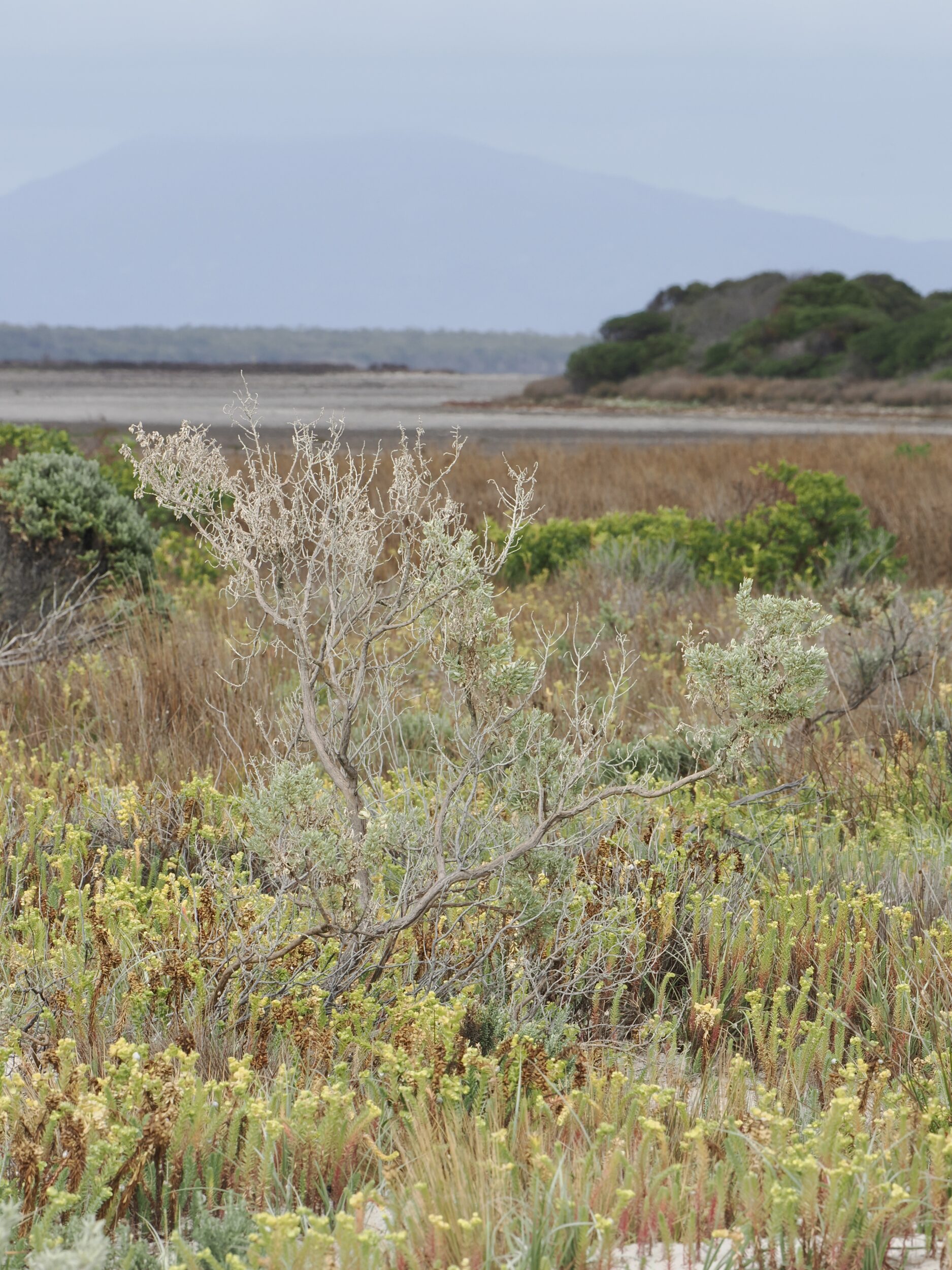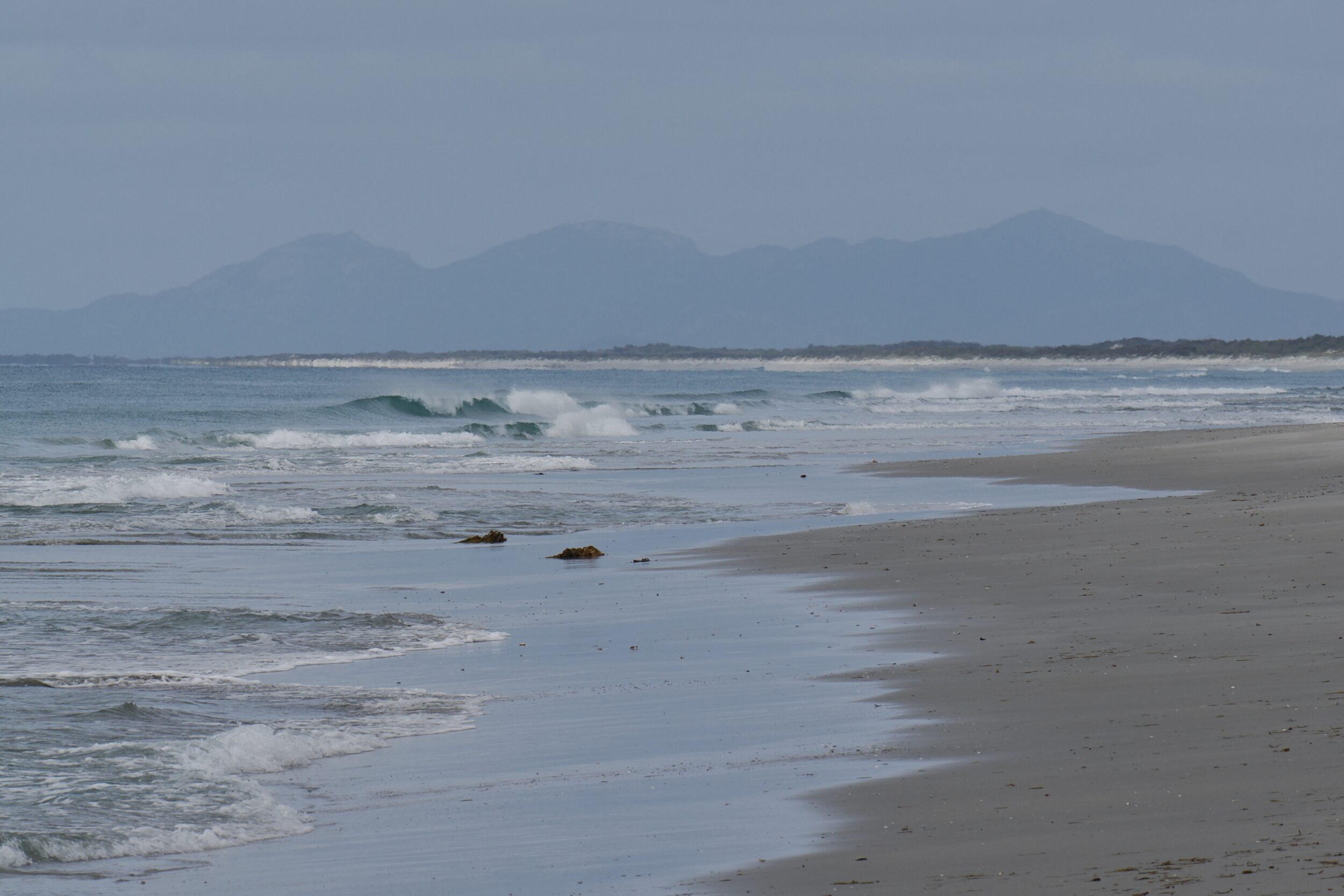From Sellars Point – a couple of kilometres east of Red Bluff – Flinders Island’s longest beach stretches along almost the entire southern half of Flinders’ east coast.
Nominally, Planter Beach is two beaches, separated (at East River Bluff) by what justifies Cameron Inlet’s status as an inlet.
Only rarely, however, does Flinders’ largest inlet contain enough water for it to open its “mouth” and “kiss” the ocean.
Planter Beach (North) and Planter Beach (South) are usually a single, uninterrupted strand.
The featured image looks south; on the horizon are Strzelecki National Park’s mountains, which dominate the southern end of Flinders Island.
The featured photo’s vantage point is just south of East River Bluff, adjacent to the northern end of Cameron Inlet – where that inlet very occasionally meets the sea, directly.
At that time – a grey morning on 26 May 2025 – Flinders Island had long been in the grip of an atypical drought.
None of its many “wetlands” were visibly-wet; all were devoid of water birds.
Flinders’ various lagoons are usually a “paradise” for water birds..and for birdwatchers

In late March of this year, Flinders’ wetlands” were still dry, but one of the island’s “signature” bird species was still doing very well, thank you.
On 26 March much of the island’s “settled”, inland landscape was a sandy “sea” of green, dotted with black…and grey.
Co-existing “surprisingly” well with the very large number of “foreign” (Black Angus) cattle, were more than just a few grey-feathered “locals”.
Those “locals” are the heroes of the next few chapters,

Comments